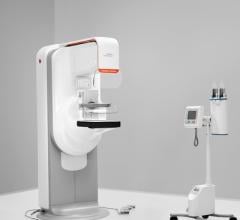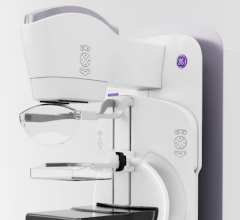MBI Effective for Surgical Treatment Planning
According to a new study, molecular breast imaging (MBI) is effective in the preoperative evaluation of women with biopsy-proven breast cancer. Published in the April issue of Journal of Nuclear Medicine, the study shows MBI can detect invasive ductal cancer (IDC), ductal carcinoma in situ (DCIS) and invasive lobular cancer (ILC), and can play a valuable role in evaluating the extent of disease and presence of multifocal disease in the breast for surgical treatment planning.
The study goals were to determine whether MBI is more sensitive than mammography in detecting additional foci of breast cancer in the ipsilateral and contralateral breasts and in the evaluation of disease extent of biopsy-proven disease.
Patients with biopsy-proven breast cancer scheduled for surgery were offered enrollment in the study. All patients had a diagnostic mammogram and an MBI study prior to surgery. Patients with MBI studies showing additional sites of disease underwent additional diagnostic studies. At the time of operation, the pathologic findings were correlated with the MBI results. MBI studies were performed using a Gamma Medica LumaGEM MBI system, which comprises dual-head pixilated cadmium zinc telluride (CZT) detectors mounted on a modified mammographic gantry. For MBI, patients were injected with 296 MBq Tc-99m sestamibi and the standard CC and MLO views were acquired of each breast.
A total of 98 patients with biopsy-proven breast cancer were enrolled and underwent preoperative MBI and completed surgical resection. MBI detected additional disease greater than that identified by the combination of mammogram and ultrasound, which altered the surgical treatment in 12 patients (12/98 = 12.2%).
In 7 of 98 patients, MBI detected additional foci of cancer not seen on mammography (7.1%). This resulted in change of surgical treatment plan from breast conservation to mastectomy. Final pathology confirmed that mastectomy was warranted.
One patient (1%) had a contralateral breast cancer detected on MBI that was not detected with mammography. Second-look mammogram and ultrasound with biopsy demonstrated invasive breast cancer, and the patient underwent surgery on both breasts.
Two patients (2%) had uptake in the contralateral breast on MBI. Surgical excision demonstrated atypical ductal hyperplasia and atypical lobular hyperplasia. Another patient had an abnormality detected on MBI which, at the time of planned bilateral mastectomy, was found to represent atypical ductal hyperplasia.
In 3 out of 98 patients, MBI detected a significantly greater extent of disease than mammography (3%), which resulted in change of surgical treatment plan from breast conservation to mastectomy.
For more information, visit www.gammamedica.com
Outlook Good for Low-Dose MBI
The possibility of low-dose molecular breast imaging (MBI) looks promising, according to recent clinical evidence revealed at the National Institutes of Health (NIH). Marcela Bohm-Velez, M.D., and colleagues from Associates in Pittsburgh, Penn., shared preliminary results from a prospective study on low-dose MBI, specifically breast-specific gamma imaging (BSGI), at the Society of Nuclear Medicine’s “Breast Cancer Imaging: State of the Art 2011” event. They suggest it may be possible to reduce the radiation dose patients get from a BSGI procedure by up to 60%.
The tracer used, Technetium Tc99m Sestamibi (MIBI), has been used in cardiac studies for years and was cleared by the FDA in the mid-1990s for diagnostic breast imaging. The recommended dose (20–30 mCi) was established using an older, larger, less sensitive whole body imaging system. Newer breast-optimized imaging systems have an inherently higher photon sensitivity which may allow a lesser dose to be used.
At the Weinstein Imaging Center, BSGI has become a valuable diagnostic tool, especially for patients with dense breast tissue that limits the effectiveness of mammography. “In order to optimize care and use BSGI to screen specific populations, we wanted to examine the possibility of using a lesser dose,” said Bohm-Velez. “The present challenge for the clinician is that the use of lower doses is currently an off-label use of the pharmaceutical.”
Their study compared breast tissue uptake at low-dose levels of 5, 10 and 15 mCi to those obtained with the conventional 20 mCi (740 MBq) injections. Bohm-Velez said, “Although these are early results, we were quite surprised to see that we can reduce the dose to 15 mCi without any substantial impact on breast tissue uptake or image quality. In addition, a 10 mCi image still provided a very good, clinically viable image. The good news is that at lower doses, the breast tissue uptake is still sufficient, leading us to believe that a dose of 8 mCi is likely possible with the current instrumentation.”
Bohm-Velez said investigations are underway at the University of Virginia to potentially allow doses as low as 2–4 mCi to be used, making the radiation dose from a BSGI/MBI study equivalent to that from a mammogram.


 December 17, 2025
December 17, 2025 









